From the U.S. Postal Service announcement on November 17, 2020: From the USPS: In recent decades, Day of the Dead has caught on in the United States as a festive and increasingly popular celebration for all ages. These new stamps will be the first issued by the U.S. Postal Service to mark this holiday. Luis Fitch designed and illustrated the stamps. Antonio Alcalá was the art director.
From the USPS: In recent decades, Day of the Dead has caught on in the United States as a festive and increasingly popular celebration for all ages. These new stamps will be the first issued by the U.S. Postal Service to mark this holiday. Luis Fitch designed and illustrated the stamps. Antonio Alcalá was the art director.
These stamps will be issued September 30th with a ceremony in El Paso, Texas.
Here are the Scott catalogue numbers:
5640 Girl’s Skull with Bow
a. Imperforate
5641 Man’s Skull with Hat
a. Imperforate
5642 Woman’s Skull with Curled Hair
a. Imperforate
5643 Boy’s Skull
a. Imperforate
b. Horiz. strip of 4, #5640-5643
c. Imperforate strip of 4, #5640a-5643a
Additional information will be posted below the line, with the most recent at the top.
Updated October 21st:
Here is the Digital Color Postmark for this issue: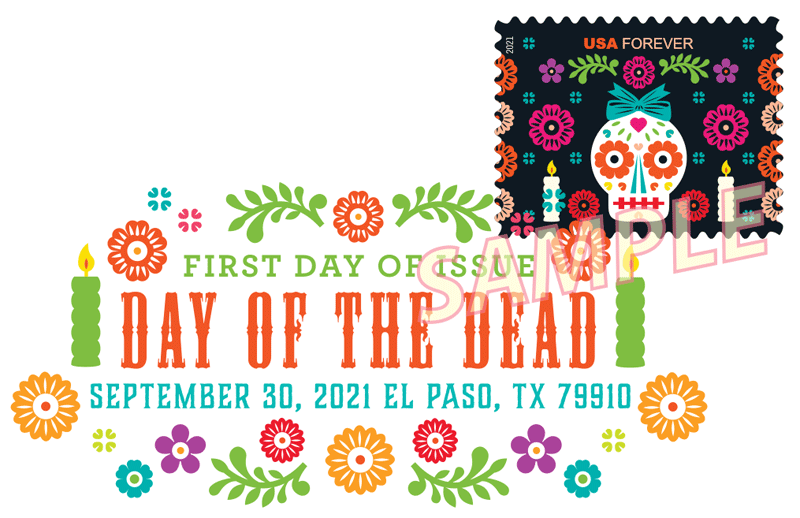 It measures 2.94″ x 1.37″. There is no pictorial black-and-white postmark for this issue, just the FIRST DAY OF ISSUE postmark.
It measures 2.94″ x 1.37″. There is no pictorial black-and-white postmark for this issue, just the FIRST DAY OF ISSUE postmark.
Updated August 28th from the Postal Bulletin:
On September 30, 2021, in El Paso, TX, the United States Postal Service® will issue the 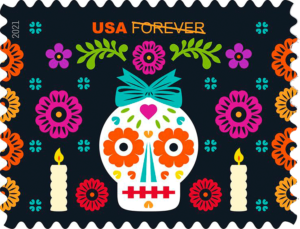 Day of the Dead stamps (Forever® priced at the First-Class Mail® rate) in four designs, in a pressure-sensitive adhesive (PSA) pane of 20 stamps (Item 481400). These stamps will go on sale nationwide September 30, 2021, and must not be sold or canceled before the first-day-of-issue. The Day of the Dead pane of 20 stamps may not be split and the stamps may not be sold individually.
Day of the Dead stamps (Forever® priced at the First-Class Mail® rate) in four designs, in a pressure-sensitive adhesive (PSA) pane of 20 stamps (Item 481400). These stamps will go on sale nationwide September 30, 2021, and must not be sold or canceled before the first-day-of-issue. The Day of the Dead pane of 20 stamps may not be split and the stamps may not be sold individually.
With the release of four colorful new stamps, the Postal Service™ celebrates Day of the Dead, an increasingly popular holiday in the United States. The stamp art features several iconic elements of a traditional Day of the Dead ofrenda, or offering, which honors departed relatives as well as heroes. Stylized, decorated “sugar skulls” are personalized as four family members, one per stamp. The lit candles flanking each sugar skull are beacons 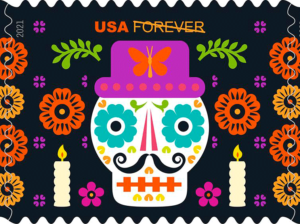 to guide deceased loved ones on their annual return journey to the land of the living. Dotting each stamp and embellishing their shared vertical borders are marigolds (cempazuchitles), the most popular Day of the Dead flower. Luis Fitch designed and illustrated the stamps. Antonio Alcalá was the art director.
to guide deceased loved ones on their annual return journey to the land of the living. Dotting each stamp and embellishing their shared vertical borders are marigolds (cempazuchitles), the most popular Day of the Dead flower. Luis Fitch designed and illustrated the stamps. Antonio Alcalá was the art director.
No automatic distribution.
How to Order the First-Day-of-Issue Postmark:
Customers have 120 days to obtain the first-day-of-issue postmark by mail. They may purchase new stamps at their local Post Office™ or at The Postal Store® website at usps.com/shop. They must affix the stamps to envelopes of their choice, address the envelopes (to themselves or others), and place them in a larger envelope addressed to:
FDOI – Day of the Dead Stamps
USPS Stamp Fulfillment Services
8300 NE Underground Drive, Suite 300
Kansas City, MO 64144-9900
After applying the first-day-of-issue postmark, the Postal Service will return the envelopes through the mail. There is no charge for the postmark up to a quantity of 50. There is a 5-cent charge for each additional postmark over 50. All orders must be postmarked by January 30, 2022.
Technical Specifications:
Issue: Day of the Dead Stamps
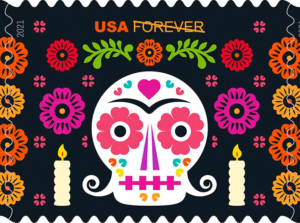 Item Number: 481400
Item Number: 481400
Denomination & Type of Issue: First-Class Mail Forever
Format: Pane of 20 (4 designs)
Series: N/A
Issue Date & City: September 30, 2021, El Paso, TX 79910
Art Director: Antonio Alcalá, Alexandria, VA
Designer: Luis Fitch, Minneapolis, MN
Artist: Luis Fitch, Minneapolis, MN
Modeler: Sandra Lane/Michelle Finn
Manufacturing Process: Offset
Printer: Banknote Corporation of America
Press Type: Alprinta
Stamps per Pane: 20
Print Quantity: 35,000,000 stamps
Paper Type: Phosphor, Overall
Adhesive Type: Pressure-sensitive
Colors: PMS 185 C, PMS 191 C, PMS 3262 C, PMS 376 C, PMS 021 C, PMS Purple C, PMS 213 C, PMS Yellow C, PMS Black 6 C
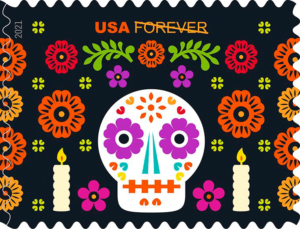 Stamp Orientation: Horizontal
Stamp Orientation: Horizontal
Image Area (w x h): 1.05 x 0.77 in./ 26.67 x 19.558 mm
Overall Size (w x h): 1.19 x 0.91 in./30.226 x 23.114 mm
Full Pane Size (w x h): 5.76 x 5.55 in./146.304 x 140.97 mm
Press Sheets Size (w x h): 23.04 x 11.1 in./585.216 x 281.94 mm
Plate Size: 320 stamps per revolution
Plate Number: “B” followed by nine (9) single digits in four corners
Marginal Markings:
Front: Plate number in four corners
Back: ©2020 USPS • USPS logo • 2 barcodes (481400) • Plate position diagram (8) • Promotional text
Updated August 25th:
[ceremony advisory]
Lively Day of the Dead Stamps Available Soon
WHAT: The U.S. Postal Service celebrates Day of the Dead with four colorful new stamps.
The first-day-of-issue event for the Day of the Dead stamps is free and open to the public. News of the stamp is being shared with the hashtag #DayoftheDeadstamps.
WHO: Michael J. Elston, secretary of the USPS Board of Governors, will serve as dedicating official.
WHEN: Thursday, Sep. 30, 2021, at 11 a.m. MDT
WHERE: El Paso Museum of Art
One Arts Festival Plaza
El Paso, TX 79901
RSVP: Dedication ceremony attendees are encouraged to RSVP at: usps.com/dayofthedead
BACKGROUND: In recent decades, Día de los Muertos, as it is known in Spanish, has caught on in the United States as a festive celebration for all ages. These new stamps from the U.S. Postal Service showcase the Day of the Dead holiday, in all its flower-bedecked splendor.
 This pane of 20 Forever stamps contains five identical rows of four colorful stamps featuring several iconic elements of a traditional Day of the Dead offering. Stylized, decorated “sugar skulls” are personalized as family members — a child with a hair bow, a father sporting a hat and mustache, a mother with curled hair, and another child. The vibrant colors of marigold flowers and other embellishments, along with the white of the sugar skulls, stand out brightly from the stamps’ black background.
This pane of 20 Forever stamps contains five identical rows of four colorful stamps featuring several iconic elements of a traditional Day of the Dead offering. Stylized, decorated “sugar skulls” are personalized as family members — a child with a hair bow, a father sporting a hat and mustache, a mother with curled hair, and another child. The vibrant colors of marigold flowers and other embellishments, along with the white of the sugar skulls, stand out brightly from the stamps’ black background.
Luis Fitch designed and illustrated the stamps. Antonio Alcalá was the art director.
Day of the Dead, with all its exuberant color, life-affirming joy, and appeal for the whole family, is fast becoming a popular American holiday.
 Customers may purchase stamps and other philatelic products through the Postal Store at usps.com/shopstamps, by calling 844-737-7826, by mail through USA Philatelic, or at Post Office locations nationwide.
Customers may purchase stamps and other philatelic products through the Postal Store at usps.com/shopstamps, by calling 844-737-7826, by mail through USA Philatelic, or at Post Office locations nationwide.
The Postal Service generally receives no tax dollars for operating expenses and relies on the sale of postage, products and services to fund its operations.

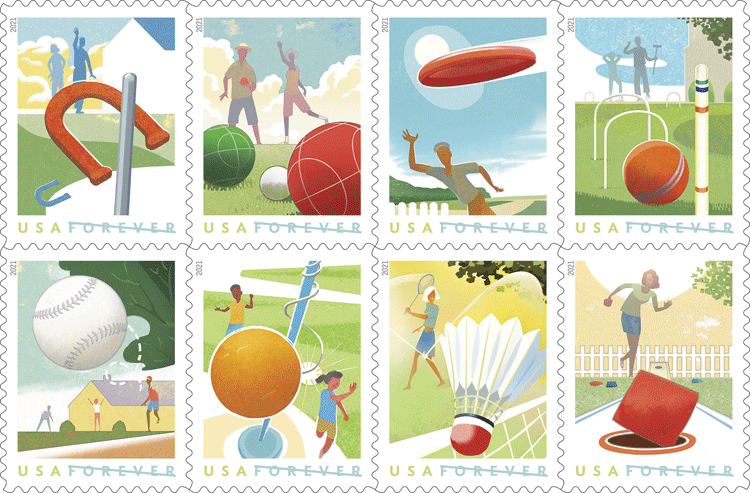 From the USPS: These stamps capture many of the games Americans play for outdoor fun. A pane of 16 stamps features eight unique designs including: badminton, bocce, cornhole, croquet, flying disc, horseshoes, tetherball and a variation on pick-up baseball. Greg Breeding was the art director. Mike Ryan designed the stamps with original artwork by Mick Wiggins.
From the USPS: These stamps capture many of the games Americans play for outdoor fun. A pane of 16 stamps features eight unique designs including: badminton, bocce, cornhole, croquet, flying disc, horseshoes, tetherball and a variation on pick-up baseball. Greg Breeding was the art director. Mike Ryan designed the stamps with original artwork by Mick Wiggins.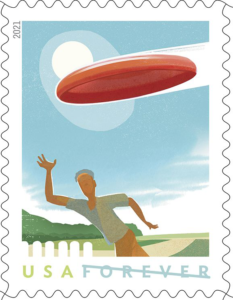
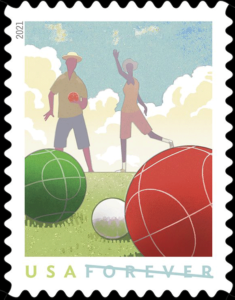
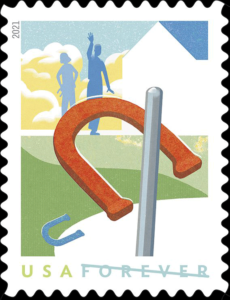
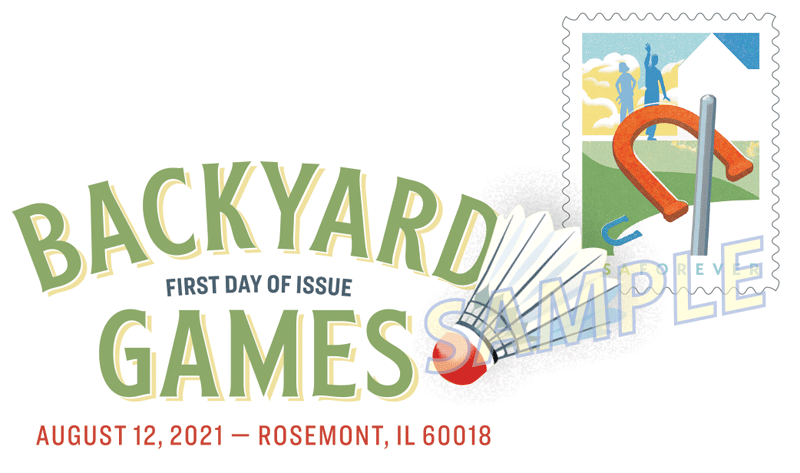
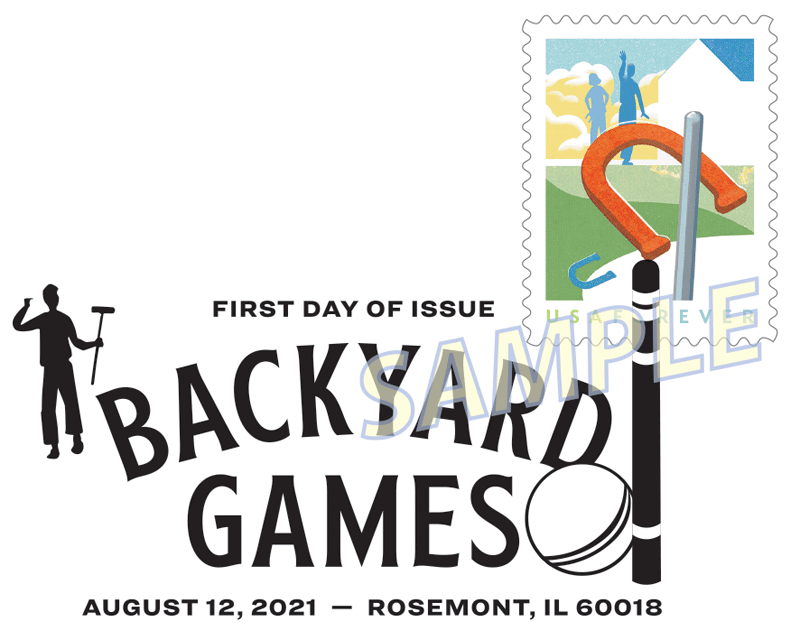
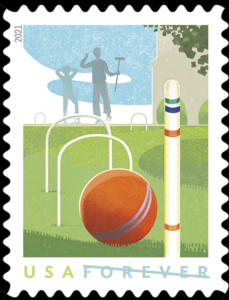
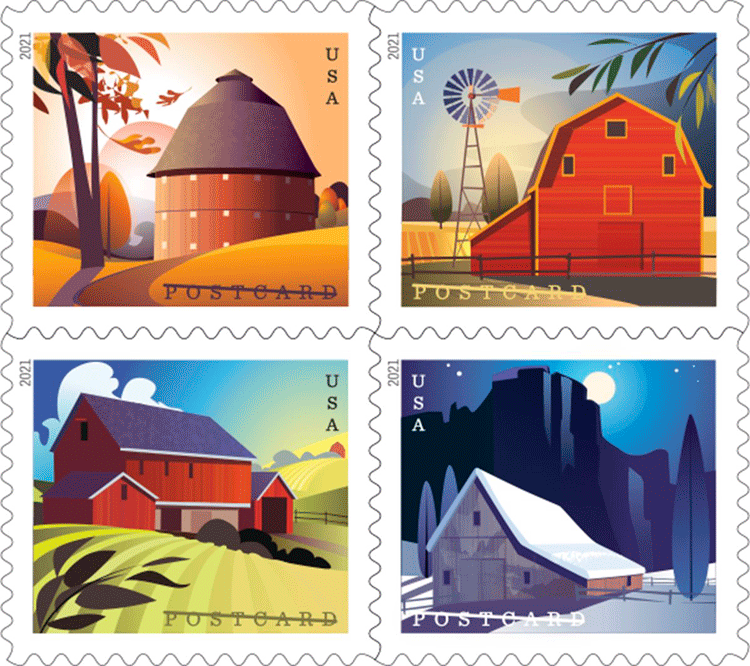 From the USPS: Four new postcard stamps celebrate the beauty and history of American barns. With differing qualities of light and color, each piece reflects one of the four seasons: a round barn surrounded by the hazy light and warm colors of fall, a gambrel-roofed barn in summer, a forebay barn in an early spring countryside, and a Western barn on a winter’s night. Ashley Walton designed the stamps with original artwork by Kim Johnson. Greg Breeding was the art director.
From the USPS: Four new postcard stamps celebrate the beauty and history of American barns. With differing qualities of light and color, each piece reflects one of the four seasons: a round barn surrounded by the hazy light and warm colors of fall, a gambrel-roofed barn in summer, a forebay barn in an early spring countryside, and a Western barn on a winter’s night. Ashley Walton designed the stamps with original artwork by Kim Johnson. Greg Breeding was the art director.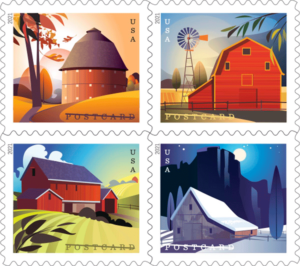 created digital paintings of four types of iconic barns found in the rural American landscape. With differing qualities of light and color, each piece reflects one of the four seasons:
created digital paintings of four types of iconic barns found in the rural American landscape. With differing qualities of light and color, each piece reflects one of the four seasons: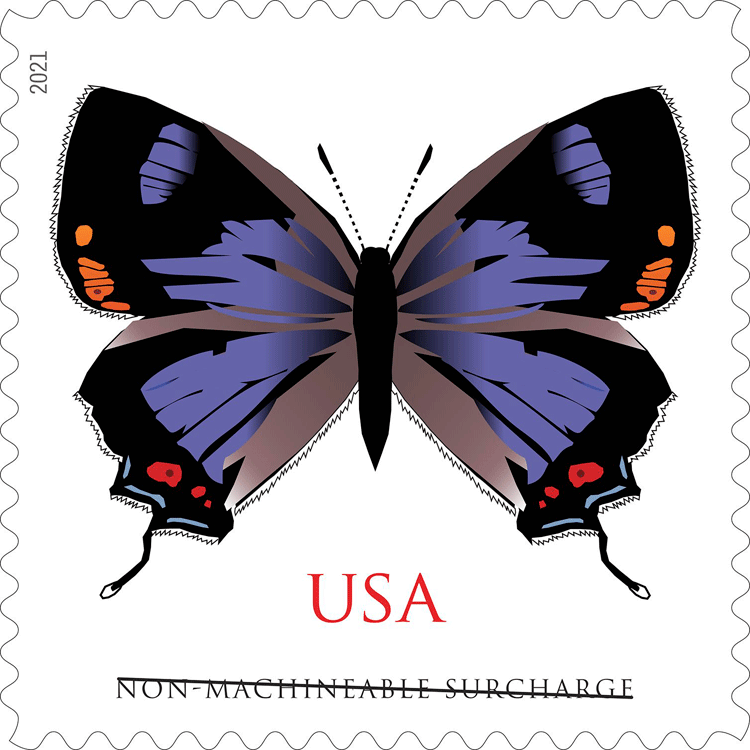 From the USPS: The Colorado hairstreak graces the eighth nonmachinable butterfly stamp for use on irregularly sized envelopes, such as square greeting cards, invitations or announcements. The stamp art is a highly stylized, simplified image of a Colorado hairstreak (Hypaurotis crysalus). Artist Tom Engeman created the stamp art. Art director Derry Noyes designed the stamp.
From the USPS: The Colorado hairstreak graces the eighth nonmachinable butterfly stamp for use on irregularly sized envelopes, such as square greeting cards, invitations or announcements. The stamp art is a highly stylized, simplified image of a Colorado hairstreak (Hypaurotis crysalus). Artist Tom Engeman created the stamp art. Art director Derry Noyes designed the stamp.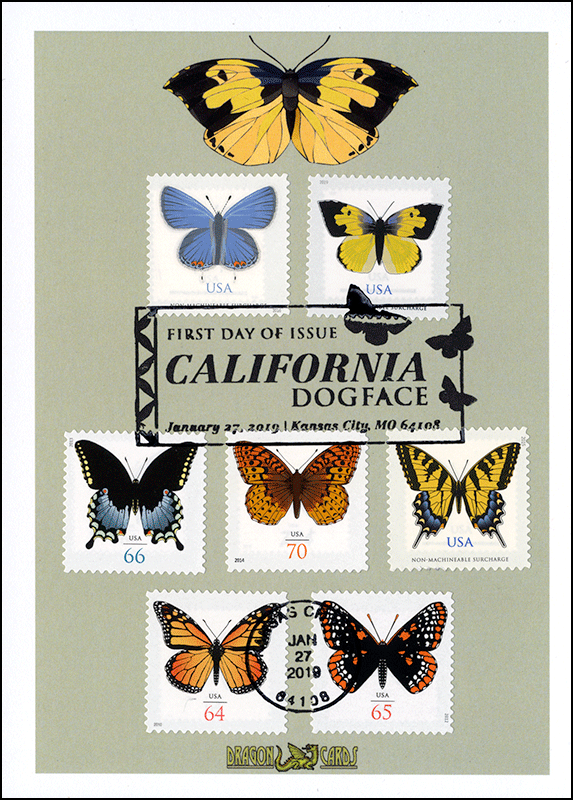
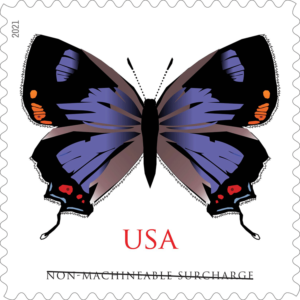
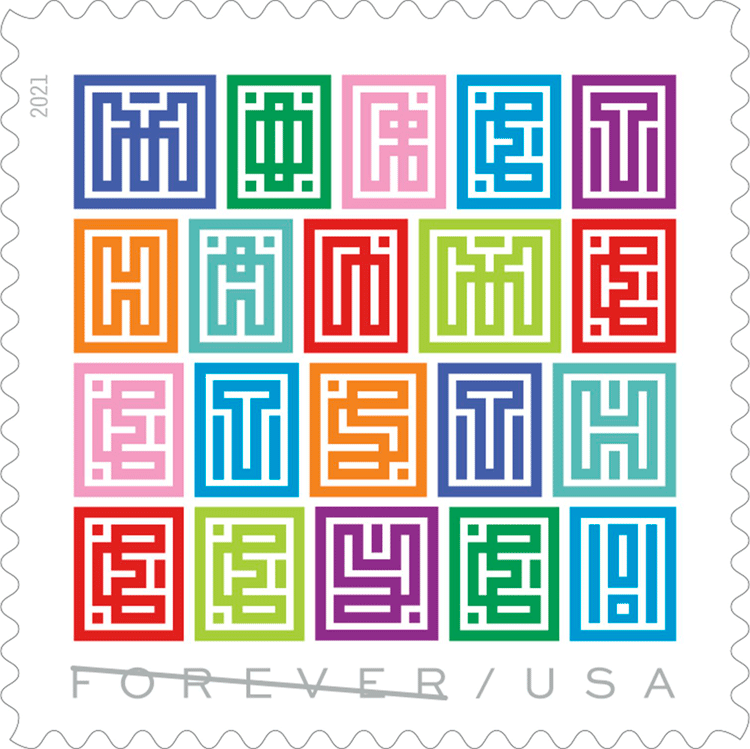 From the USPS: The new Mystery Message stamp will put your sleuthing skills to the test. Featuring bright colors and interesting shapes, the stamp design is a visual riddle spelling out a message. Each colorful square contains a letter in an interesting pattern. The patterns, though seemingly random, were carefully placed so that when put all together, the message reads, “MORE THAN MEETS THE EYE!” Art director Antonio Alcalá designed the stamp.
From the USPS: The new Mystery Message stamp will put your sleuthing skills to the test. Featuring bright colors and interesting shapes, the stamp design is a visual riddle spelling out a message. Each colorful square contains a letter in an interesting pattern. The patterns, though seemingly random, were carefully placed so that when put all together, the message reads, “MORE THAN MEETS THE EYE!” Art director Antonio Alcalá designed the stamp.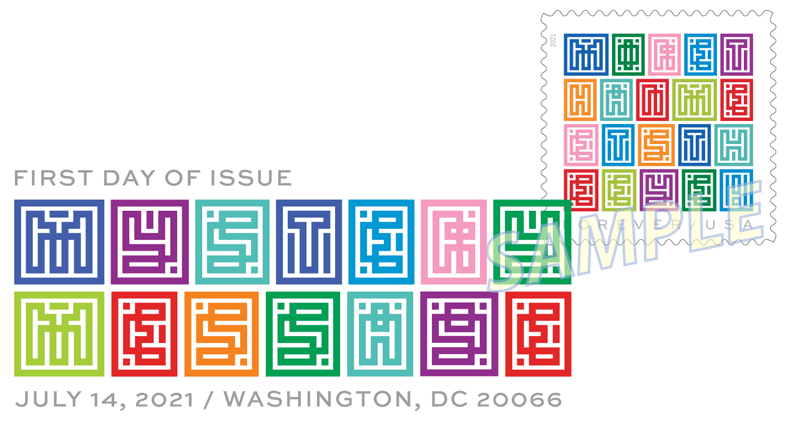
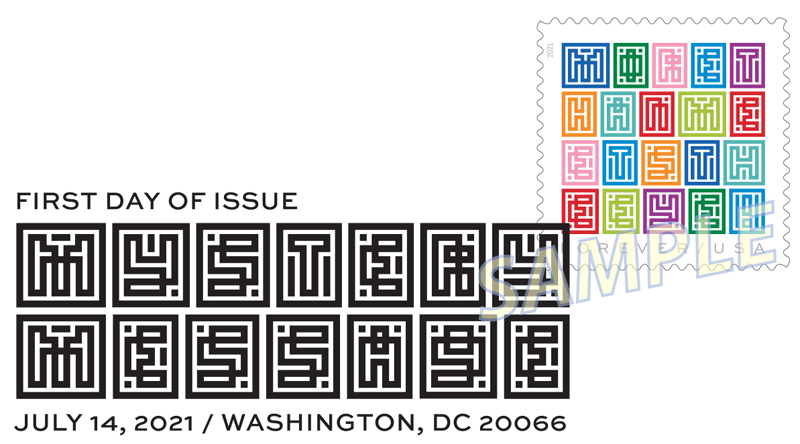
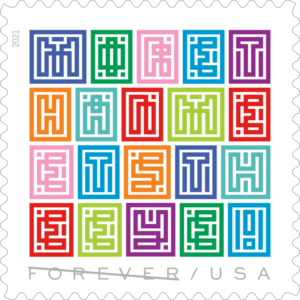
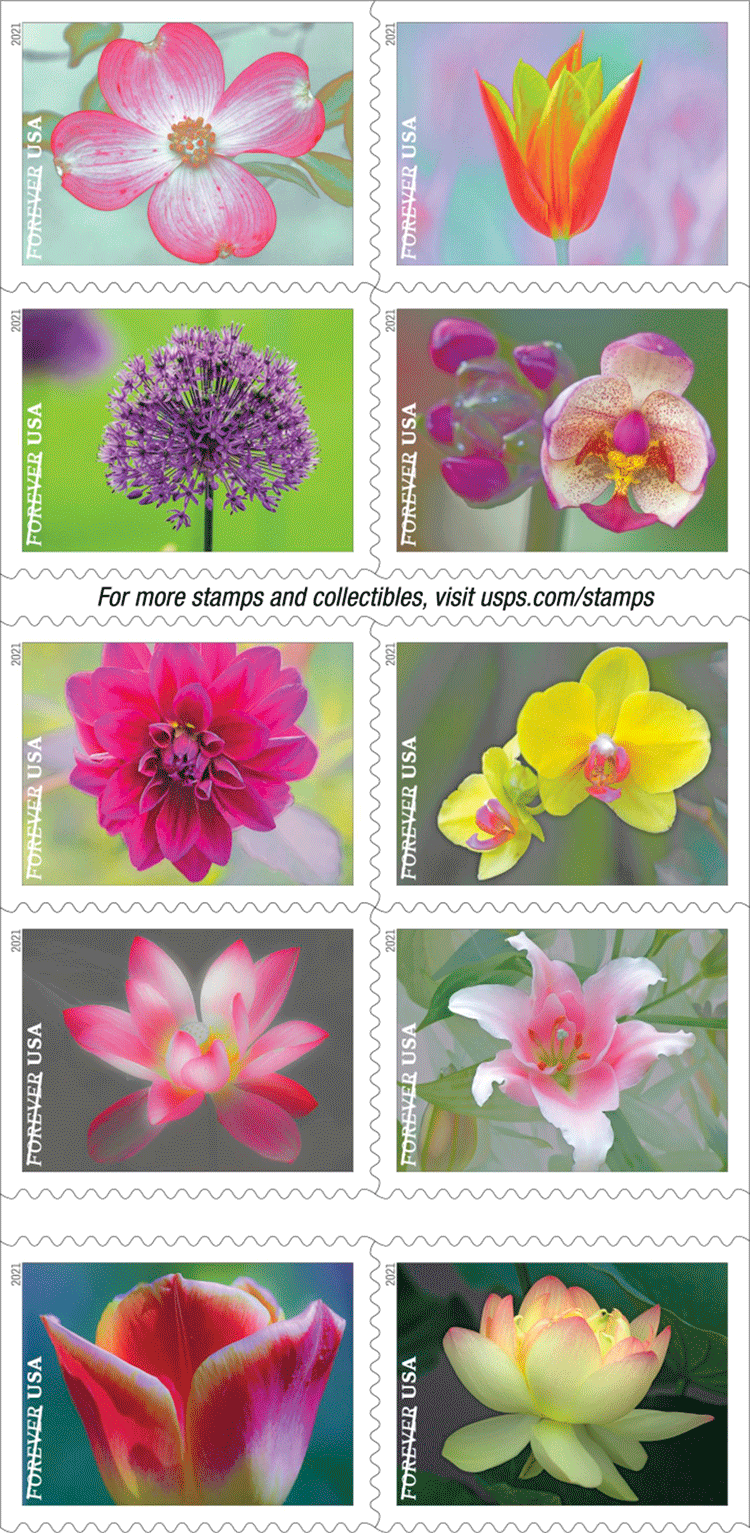 From the USPS: Garden Beauty celebrates America’s love of flowers and gardens with 10 new stamp designs in a booklet of 20. The stamps include a pink flowering dogwood; a rose-pink and white tulip; an allium, or ornamental onion; a pink and white Asiatic lily; a magenta dahlia; a yellow and pink American lotus; a pink moth orchid with mottled petals; a pink and white sacred lotus; an orange and yellow tulip; and a yellow moth orchid with a pink center. Art director Ethel Kessler designed the stamps with existing photographs by Allen Rokach.
From the USPS: Garden Beauty celebrates America’s love of flowers and gardens with 10 new stamp designs in a booklet of 20. The stamps include a pink flowering dogwood; a rose-pink and white tulip; an allium, or ornamental onion; a pink and white Asiatic lily; a magenta dahlia; a yellow and pink American lotus; a pink moth orchid with mottled petals; a pink and white sacred lotus; an orange and yellow tulip; and a yellow moth orchid with a pink center. Art director Ethel Kessler designed the stamps with existing photographs by Allen Rokach.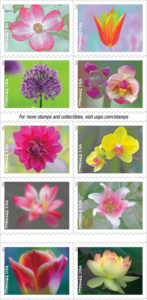 5558 Pink Flowering Dogwood
5558 Pink Flowering Dogwood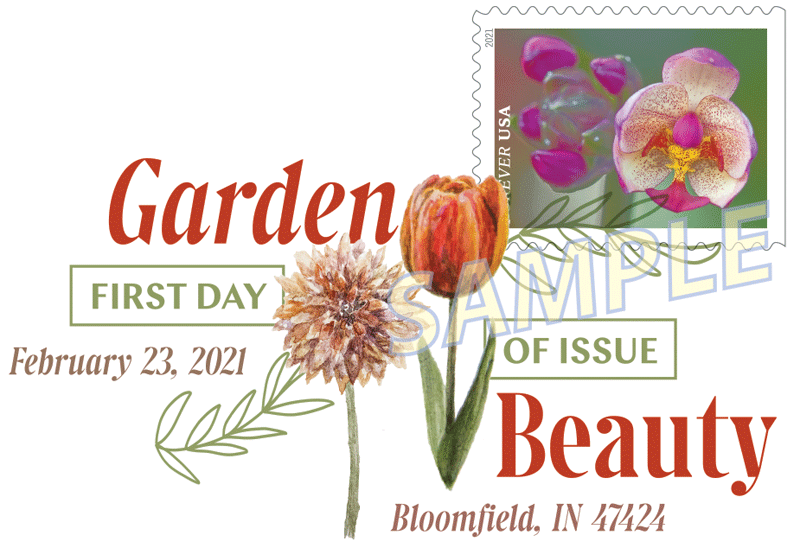 The Digital Color Postmark measures 2.96″ x 1.47″
The Digital Color Postmark measures 2.96″ x 1.47″ 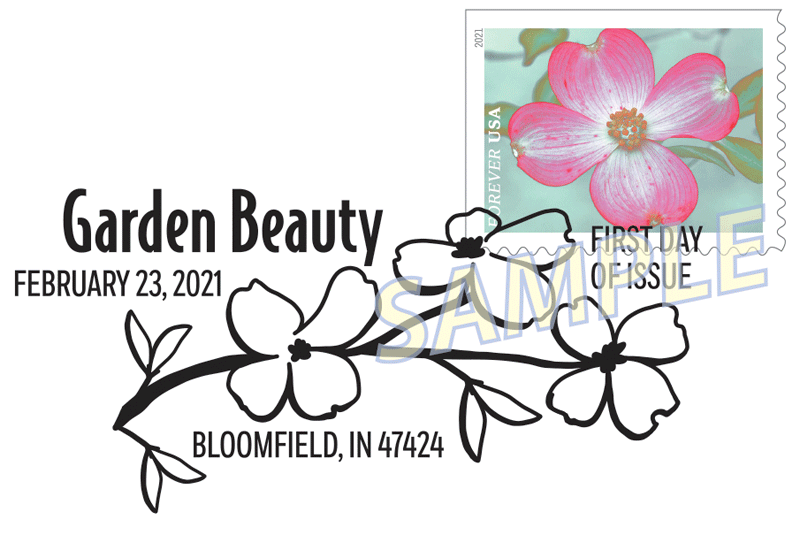 The pictorial postmark measures 2.59″ x 1.22″. The previously announced “killerbar” (“FIRST DAY OF ISSUE”) hand cancel is also available.
The pictorial postmark measures 2.59″ x 1.22″. The previously announced “killerbar” (“FIRST DAY OF ISSUE”) hand cancel is also available.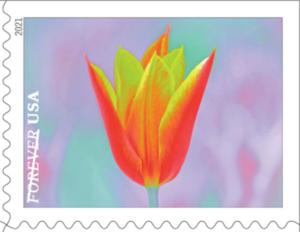
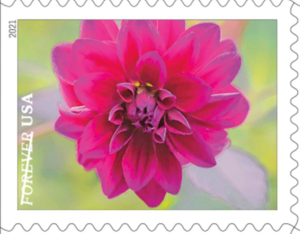 Colors: Cyan, Magenta, Yellow, Black
Colors: Cyan, Magenta, Yellow, Black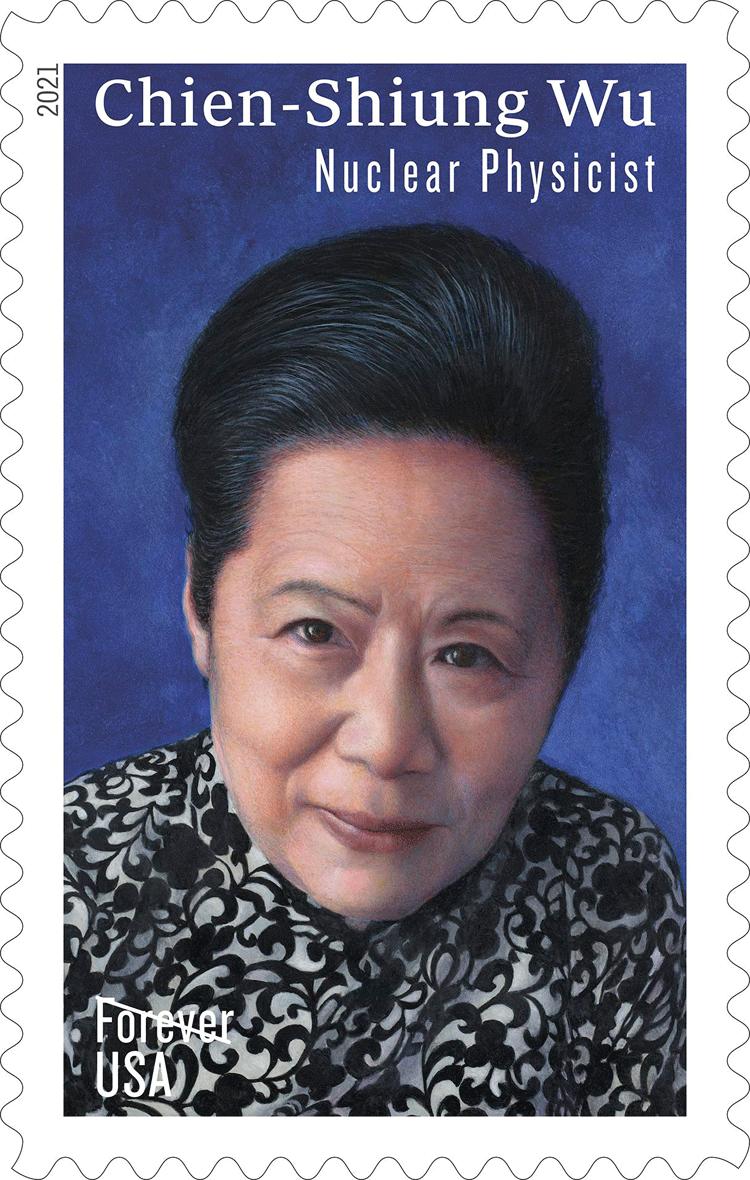 From the USPS: Chien-Shiung Wu (1912-1997) was one of the most influential nuclear physicists of the 20th century. During a career that spanned more than 40 years in a field dominated by men, she established herself as the authority on conducting precise and accurate research to test fundamental theories of physics. Art Director Ethel Kessler designed the stamp with original art by Kam Mak.
From the USPS: Chien-Shiung Wu (1912-1997) was one of the most influential nuclear physicists of the 20th century. During a career that spanned more than 40 years in a field dominated by men, she established herself as the authority on conducting precise and accurate research to test fundamental theories of physics. Art Director Ethel Kessler designed the stamp with original art by Kam Mak.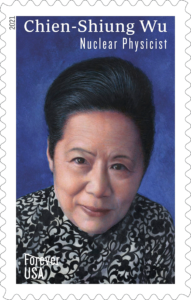 most influential nuclear physicists of the 20th century, with a commemorative Forever stamp.
most influential nuclear physicists of the 20th century, with a commemorative Forever stamp.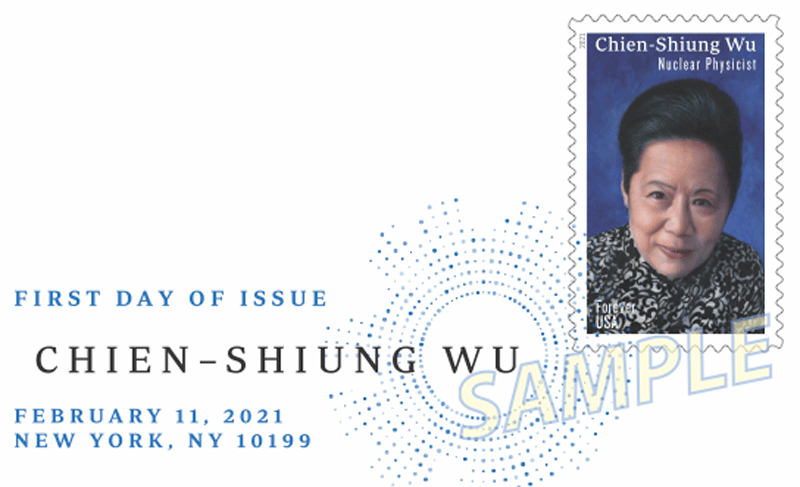 The Digital Color Postmark measures 2.91″ x 1.50″
The Digital Color Postmark measures 2.91″ x 1.50″  The B&W pictorial postmark measures 2.73″ x .78″
The B&W pictorial postmark measures 2.73″ x .78″  The special postmark, for use by other post offices, measures 2.49″ x 1.00
The special postmark, for use by other post offices, measures 2.49″ x 1.00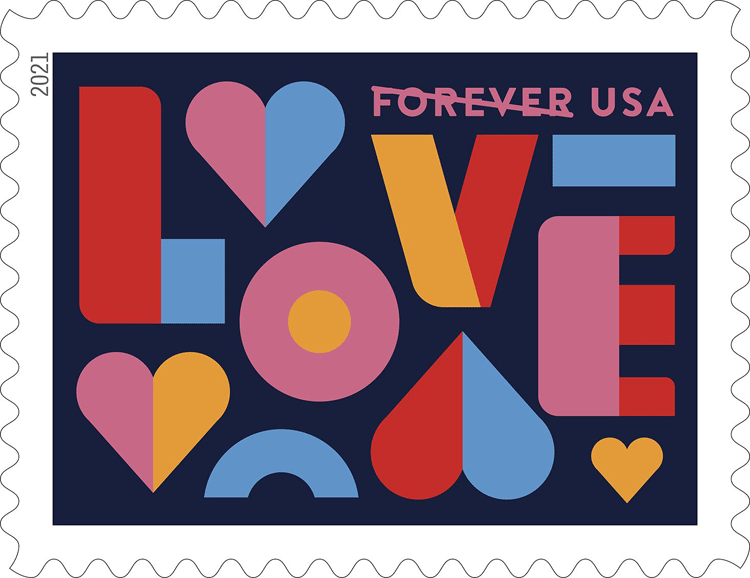 From the USPS: The Postal Service continues its popular Love series with a new stamp in 2021. The stamp art features a lighthearted and colorful digital illustration with the word “LOVE” and three large hearts shown in an unconventional palette of color duos, strikingly set against a dark blue background. Greg Breeding was art director; Bailey Sullivan created the original art and designed the stamp.
From the USPS: The Postal Service continues its popular Love series with a new stamp in 2021. The stamp art features a lighthearted and colorful digital illustration with the word “LOVE” and three large hearts shown in an unconventional palette of color duos, strikingly set against a dark blue background. Greg Breeding was art director; Bailey Sullivan created the original art and designed the stamp.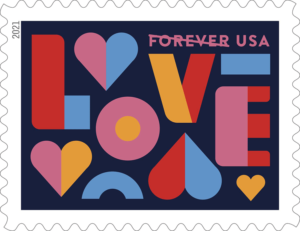 pages.Please visit usps.com/love for details of the dedication ceremony.
pages.Please visit usps.com/love for details of the dedication ceremony.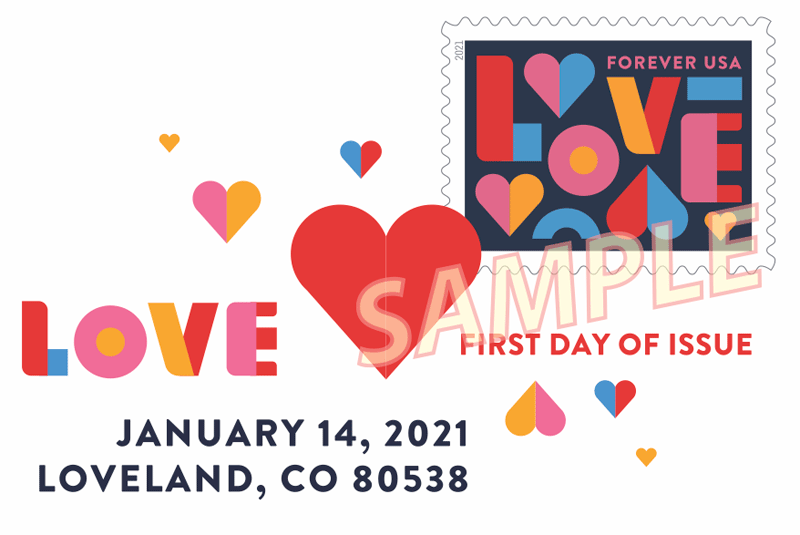 The Digital Color Postmark measures 2.67″ x 1.34″
The Digital Color Postmark measures 2.67″ x 1.34″ 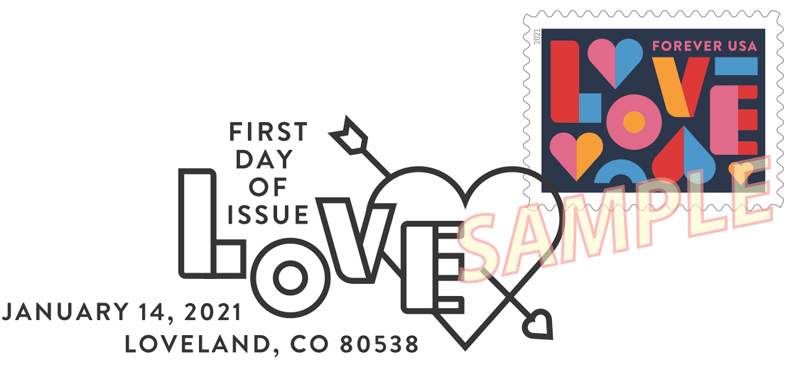 The pictorial postmark measures 2.64″ x 1.14″
The pictorial postmark measures 2.64″ x 1.14″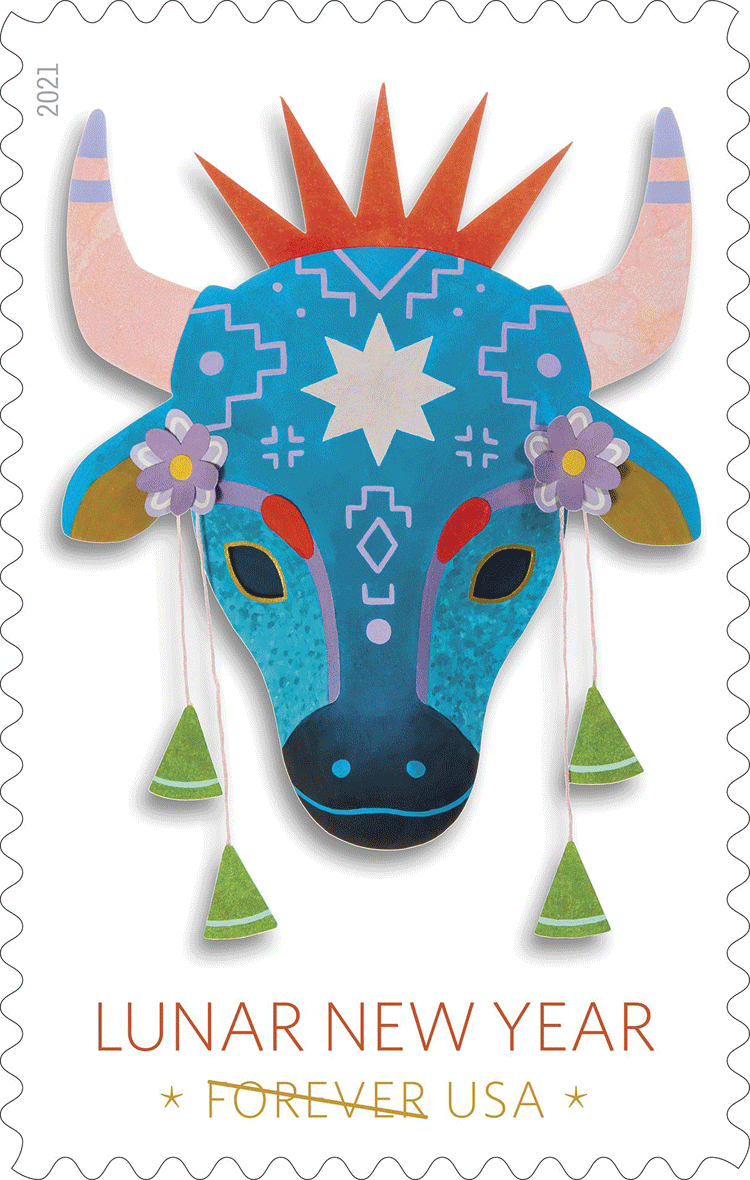 From the USPS: In 2021, the Postal Service will issue the second of 12 stamps in a new series of Lunar New Year stamps. Calling to mind the elaborately decorated masks used in the dragon or lion dances often performed during Lunar New Year parades, these three-dimensional masks are a contemporary take on the long tradition of paper-cut folk art crafts created during this auspicious time of year. Art director Antonio Alcalá designed the stamp with original art by Camille Chew.
From the USPS: In 2021, the Postal Service will issue the second of 12 stamps in a new series of Lunar New Year stamps. Calling to mind the elaborately decorated masks used in the dragon or lion dances often performed during Lunar New Year parades, these three-dimensional masks are a contemporary take on the long tradition of paper-cut folk art crafts created during this auspicious time of year. Art director Antonio Alcalá designed the stamp with original art by Camille Chew.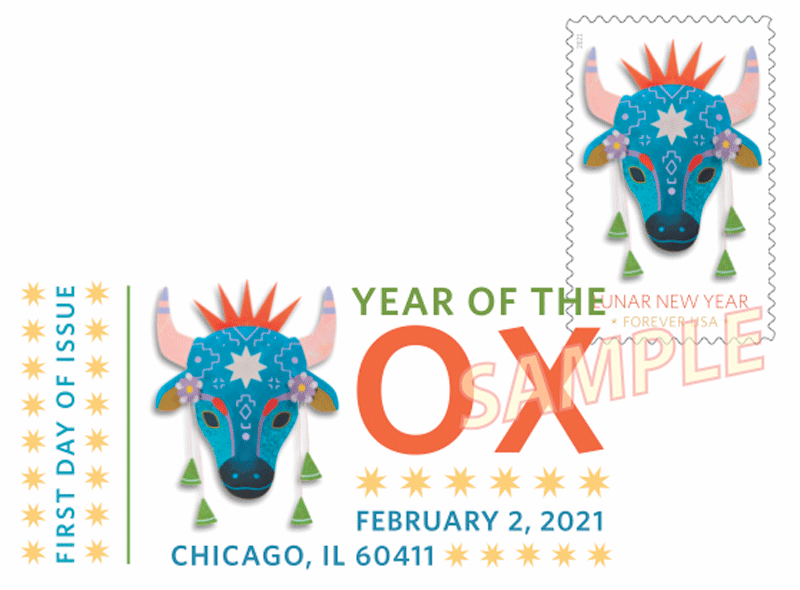 The Digital Color Postmark measures 2.87″ x 1.41″
The Digital Color Postmark measures 2.87″ x 1.41″ 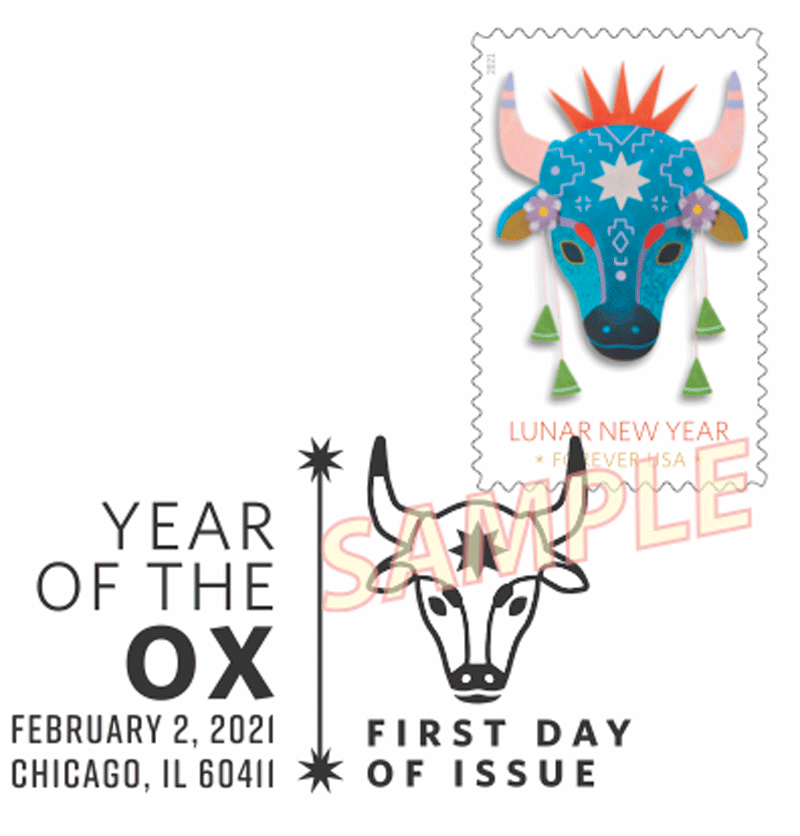 The pictorial postmark measures 2.13″ x 1.23″
The pictorial postmark measures 2.13″ x 1.23″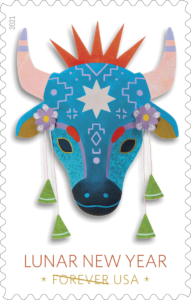 one design, in a pressure-sensitive adhesive (PSA) pane of 20 stamps (Item 480100). This stamp will go on sale nationwide February 2, 2021, and must not be sold or canceled before the first-day-of-issue. The Lunar New Year – Year of the Ox commemorative pane of 20 stamps must not be split and the stamps must not be sold individually.
one design, in a pressure-sensitive adhesive (PSA) pane of 20 stamps (Item 480100). This stamp will go on sale nationwide February 2, 2021, and must not be sold or canceled before the first-day-of-issue. The Lunar New Year – Year of the Ox commemorative pane of 20 stamps must not be split and the stamps must not be sold individually.

